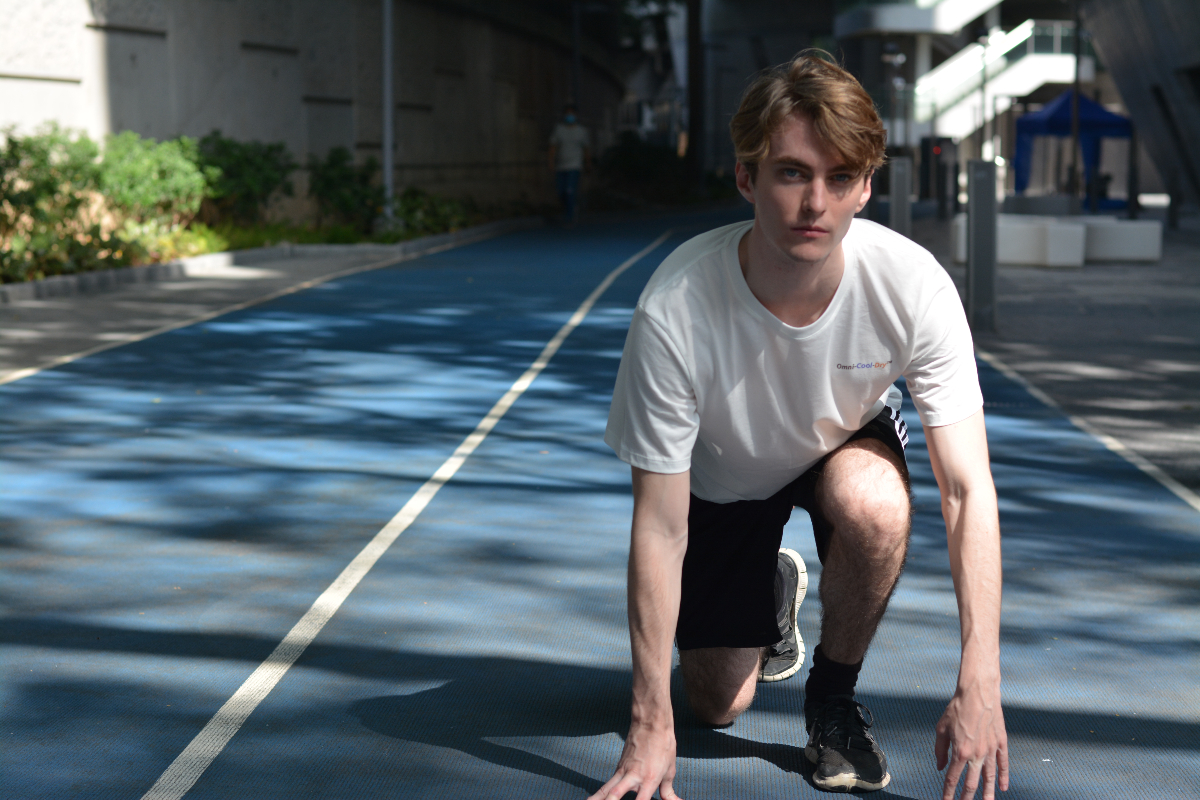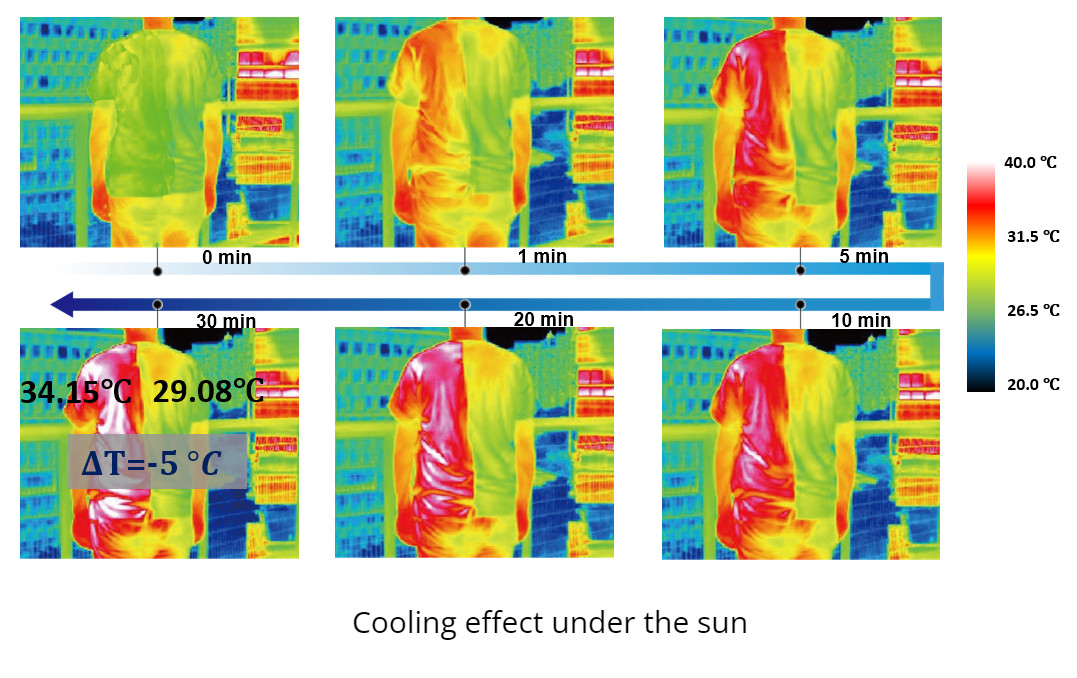AUG 2022 | ALL ISSUES
Bio-inspired Omni-Cool-Dry™ fabric provides ultimate thermal and moisture comfort

Our body needs to be in an optimal range of temperature to perform vital functions properly. In the sweltering summer, sweating is our natural mechanism to dissipate excessive heat because sweat absorbs body heat and lowers skin temperature as it evaporates. However, clothing drenched in sweat feels sticky, clingy and heavy on our skin. Besides the discomfort, fabric saturated in sweat also makes our body’s natural cooling system fail. When sweat evaporates too slowly or doesn’t evaporate at all, body heat builds up, leading to heat exhaustion and heat stroke that could be fatal.
Feeling dry while working up a sweat
There have been sweat-wicking garmens in the market, but they tend tobecome saturated during profuse sweating and the moisture transmission rate is too low to keep the wearer dry. Dr Shou Dahua, Assistant Professor of Institute of Textiles and Clothing, and his research team looked to the nature for inspirations and developed Omni-Cool-Dry™, a skin-like fabric that mimics the exoskeletons of desert beetles to reflect sunlight, radiate body heat, and directionally divert sweat to the outer surface of the fabric in the form of water droplets. It lowers the wearer’s skin temperature by 5°C, while wicking sweat three times faster, being 50% less clingy and 75% lighter than conventional fabric when soaked. Essentially, wearers are kept dry, cool and comfortable, greatly enhancing their endurance and performance in sports and other outdoor endeavours.

Cool comfort: by radiation and reflection
Australian longicorn beetles are known for their excellent thermoregulatory function as their exoskeleton selectively reflects sunlight and emits radiation. They have inspired Dr Shou and his team to coat the yarns and fabrics with nano-scale mid-infrared emitters and embedded sunlight reflectors. Dr Shou explained, “Omni-Cool-Dry™ is proven to reflect 95% of visible sunlight and near-infrared radiation from the sun. It also emits 90% of the wearer’s body heat to the cold outer space in a process known as radiative cooling. In effect, it cools the wearer’s skin by 5°C.” To securely bond the nanoparticles to the fibres and repel the external liquids simultaneously, the team used a strong and permanent bonding agent called polydimethylsiloxane (PDMS) which explains the fabric’s excellent durability in abrasion and washing tests. Typically, Omni-Cool-Dry™ clothing still preserves its full heat radiative and sunlight reflective properties after at least 5,000 abrasion cycles or 30 washes.
Dry comfort: skin-like fabric that sweats
Another species that has inspired the invention of Omni-Cool-Dry™ is the Namib Desert beetle. To survive in the dry and harsh desert, it harvests water droplets from the morning fog and transports the water to its mouth using the microscopic bumps and patterned wettability on its exoskeleton. This phenomenon is replicated in Omni-Cool-Dry™ as water channels that act like artificial sweat glands on the fabric, facilitating the unidirectional transport of sweat from the wearer’s skin to the exterior in form of water droplets. While the fabric is universally treated with water repellent coating, artificial sweat glands are distributed throughout. These channels are treated with a wettability gradient so that moisture can only move from the wearer’s skin to the exterior, but not the other way round, meaning the fabric is breathable, but also rainproof.

“Commercial breathable fabrics in the market wick sweat as water vapour. A square metre of the best ones can transmit 460 g of sweat each hour. However, a person performing moderate exercise typically perspires up to 2,000 g of sweat per hour per square metre. That means existing commercial breathable fabric doesn’t wick the sweat fast enough for the wearer to feel dry. On the contrary, Omni-Cool-Dry™ transports the sweat in form of water droplets. As each droplet of sweat is made up of trillions of molecules, it removes sweat from the skin a lot faster than regular sweat-wicking fabric,” Dr Shou remarked. In fact, Omni-Cool-Dry™ is found to have an extra-high sweat transfer rate over 3,000 g/h/m2, meaning the wearer feels dry even when performing moderate to strenuous exercises. As Omni-Cool-Dry™ doesn’t absorb as much water as conventional fabric, its wearing comfort is greatly enhanced.
Versatile, cost-effective and scalable
Besides enhancing comfort, performance and stamina of athletes and outdoor enthusiasts, uniforms and workwear made with Omni-Cool-Dry™ are also a great way to ensure occupational safety and health among those with physically demanding jobs, such as construction workers, firefighters, healthcare workers, and those in armed forces and disciplinary squads. Better still, it can be produced with existing fabric manufacturing processes in a cost-effective and scalable manner.
In March 2022, Omni-Cool-Dry™ won a silver medal in the online edition of the International Exhibition of Inventions of Geneva – Special Edition 2022 Inventions Geneva Evaluation Days – Virtual Event.


